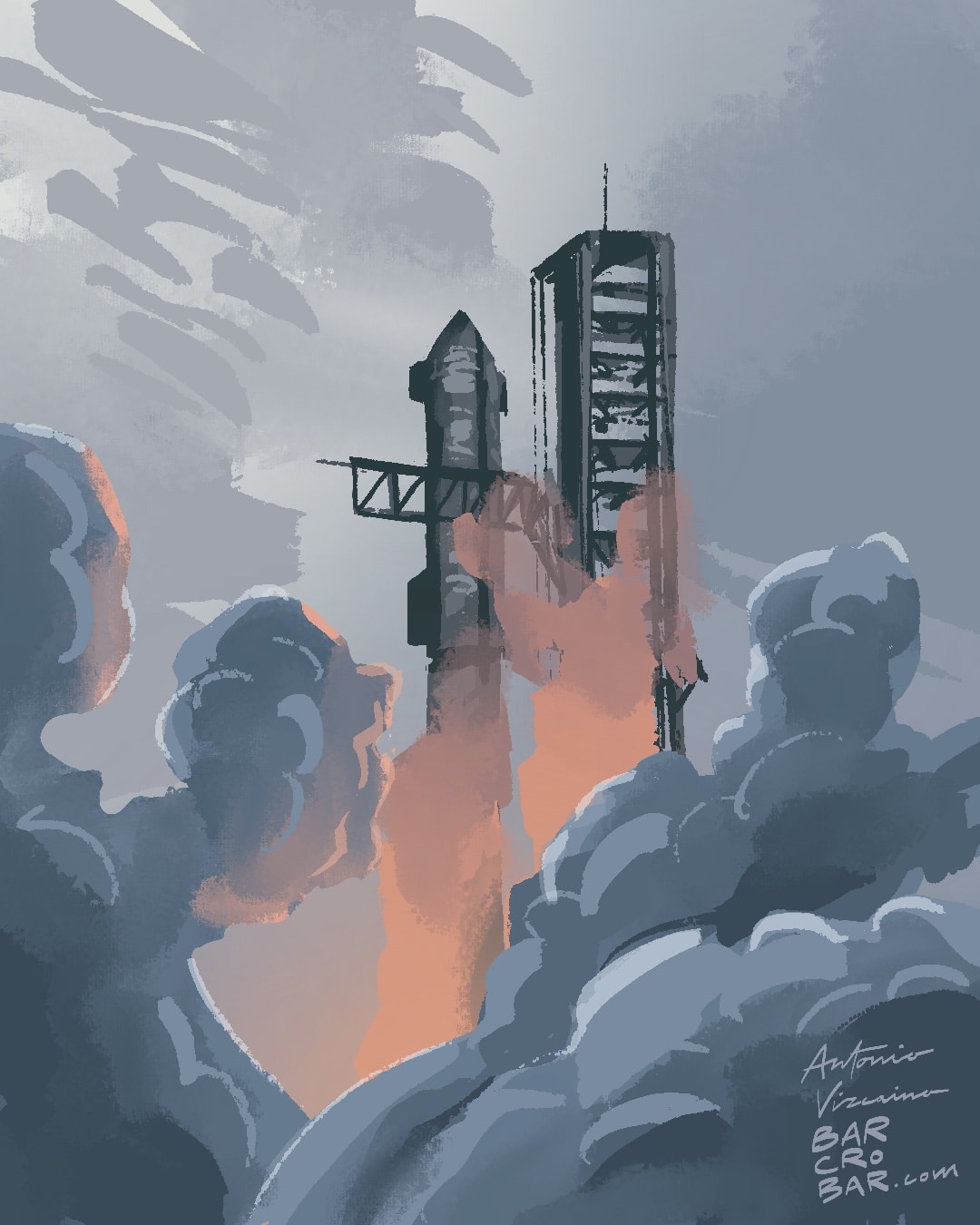"The craft has been lost," announced a commentator on the live video feed from billionaire Elon Musk's company. "So no water landing today", he added. According to the flight plan, the spacecraft was to end its journey in the Indian Ocean.
The head of SpaceX acknowledged that his rocket would have to carry out hundreds of unmanned missions before eventually carrying its first humans.
Take-off for this third test flight took place shortly after 8 a.m. local time (2 p.m. in Switzerland) from SpaceX's "Starbase" spaceport in Boca Chica, in the far south of Texas, and lasted almost half an hour. The flight nevertheless enabled the spacecraft to reach low-Earth orbit for the first time.
Putting mankind on Mars
At 120 metres high, Starship is the world's largest rocket. It is also the most powerful. SpaceX is counting on it to achieve its stated goal: to make humankind a multi-planetary species by putting it on Mars.
Its development is also very important for NASA, which is counting on this spacecraft to land its astronauts on the Moon during its mission. Artemis IIIscheduled for 2026.
The rocket has two stages: the Super Heavy propulsion stage and, above it, the Starship, which by extension gives its name to the entire rocket.
Two unsuccessful tests
The last test took place four months ago. The two stages of the rocket separated successfully in flight for the first time, but then both exploded. The flights lasted just four minutes in the first test and eight minutes in the second.
However, the spacecraft had reached an altitude of around 150 kilometres, crossing the boundary of space.
SpaceX then proposed 17 "corrective measures" to the US aviation regulator, the FAA, which had to be put in place in order to obtain a new flight licence, which was finally obtained on Wednesday.
"Ambitious objectives
For this third test, SpaceX had said it wanted to achieve several "ambitious objectives". One of these was to carry out a "controlled re-entry" of the spacecraft, which should have fallen back into the Indian Ocean to end the test after about an hour.
SpaceX also wanted to test the opening of the hatch, which could be used in the future to release cargo, such as satellites, into space.
The company also wanted to "demonstrate a fuel transfer" in flight. According to the specialist press, this transfer should have taken place between two tanks inside the spacecraft. Developing this function is essential, because to reach the Moon, Starship will have to refuel once in space, using a vessel that has already been filled by others, and acting as a kind of space service station.
In addition to its inordinate size, Starship's real innovation is that it should eventually be fully reusable. Currently, only the first stage of the Falcon 9 rocket returns to land after each launch to be reused.
Text by RTS afp/juma

